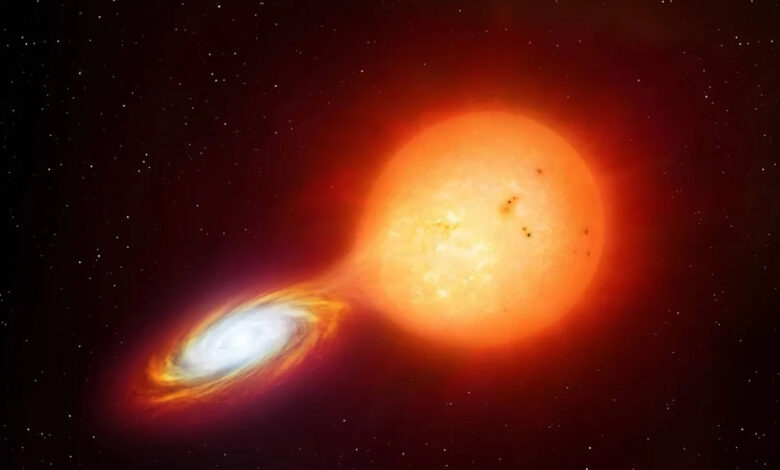
The star T Crb belongs to a special group of ten known recurring novae in the Milky Way, our host galaxy. This star provides a rare first-row position for astronomers to accurately observe its body as it devours material and explodes.
The knowledge gained from the T Crb explosion can be added to models of stellar performance. T CrB is observed every few hours every day by NASA’s Fermi Gamma-ray Space Telescope. When a nova explodes, it emits gamma rays, allowing astronomers to assess the rate of material heating immediately after the explosion, as well as the rate at which material is ejected from the white dwarf.
Astronomers are also eager to learn more about the motion of the shock waves in the moments after the explosion, the characteristics of which are not well documented. Elizabeth Hayes, senior scientist at the Fermi telescope, says that events involving white dwarf stars usually occur over long periods of time; So we may never see it again.
The rhythm of T CrB explosions during human lifetime makes this star a unique research example; Especially since during the last explosion of this nova about 80 years ago, there were no gamma-ray or X-ray telescopes in space.
Read more:
In addition to the Fermi telescope, the James Webb, Swift and Integral space telescopes along with the Very Large Array in New Mexico are set to monitor the event. Together, these telescopes will observe the nova for the first time at different wavelengths.
The T CrB nova event will be observable in the first few days with the unaided eye, for several months with gamma-ray and X-ray telescopes, and for years with radio telescopes. Long-term observations of the explosion’s wake can reveal how the explosion unfolds over time, as well as reveal its interaction with the companion red giant star.
Astronomers also monitor the decay of the explosion with great precision. Any perturbations in the observations could reveal intriguing clues about how the nova interacts with its companion star’s winds. No matter how intense the explosion of the star is, it is far enough away that it will not affect us. So we can safely look at the sky and enjoy this cosmic show.








